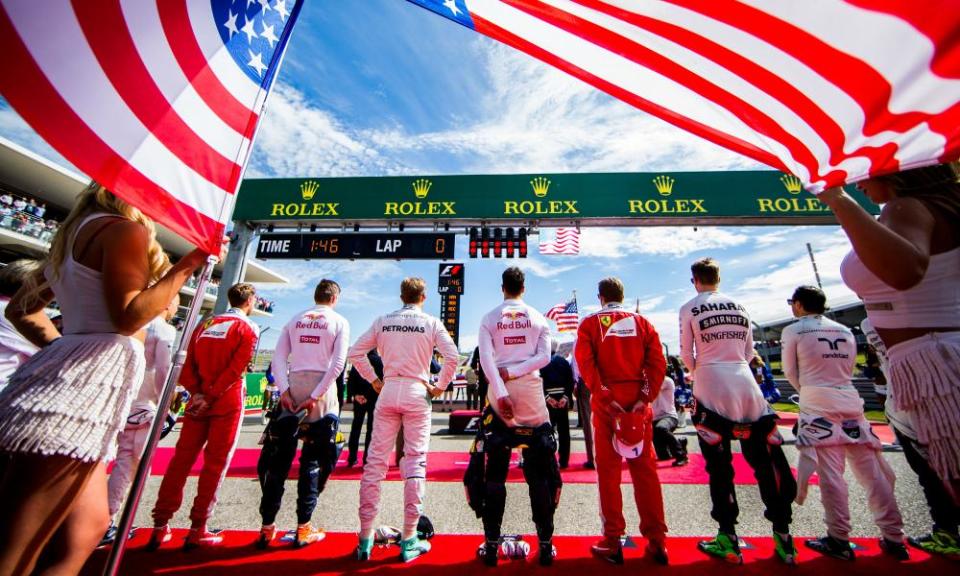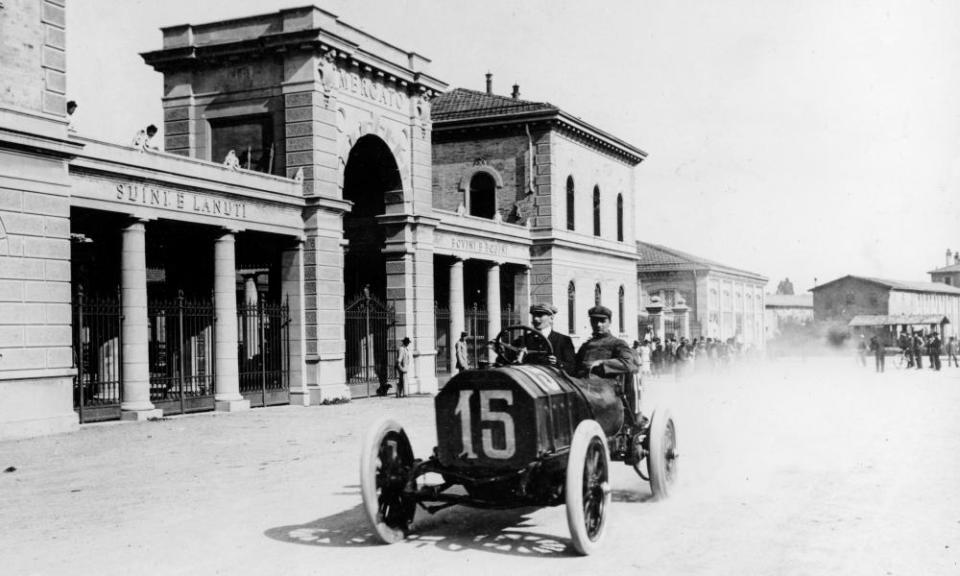Can Formula One's American takeover fuel a long-awaited US expansion?

About an hour’s drive from where I live, in the coastal hinterlands of South Carolina, lies the city of Savannah, Georgia. And every so often I’ll cross the border for a taste of the big city.
On one such excursion a few months back, while walking through a neighborhood on the fringe of Savannah’s tourist district, I found myself doubling back to examine a historical marker for something called the American Grand Prize. What’s its connection to Sunday’s United States Grand Prix in Austin, Texas? Well, it’s the granddaddy, an early milepost on the way to Formula One as we know it today.
Savannah, as it happens, is the birthplace of Grand Prix racing in America. The inaugural GP – held on Thanksgiving Day, 1908 – predates prohibition, which gave rise to Nascar, by 12 years. For the course, organizers cropped out a 25.3-mile swath around the city and hired prison workers to resurface its streets with oiled gravel. Among the bigwigs who descended on Savannah that Thursday were no less than president-elect William H Taft (maybe the US president least associated with speed until the Washington Nationals reimagined him as a keen mascot racer, and even then his stay in the Majors was brief) as well as Horace Dodge, Henry Ford and the head of Firestone tires – who overnighted at the city jail when he couldn’t get a hotel room anywhere in town.
The final spectator count ran well north of 250,000, a single-day draw neither baseball or college football could approach then or now. To ease the congestion, grandstands were erected on both sides of a single boulevard. When the checkered flag flew, a Frenchman named Louis Wagner flew past in a Fiat, 58 seconds ahead of a mostly foreign pack. In that triumphant moment, grand prize racing seemed as if it had arrived, too. Taft thought it was the future of sports in America.

The grand prize seemed here to stay. Repeat successes in ’10 and ’11 – with banking in some turns! – soon had other cities lining up to steal the grand prize away from Savannah. So it hopscotched on to New York’s Long Island, to Milwaukee, Wisconsin, and to Santa Monica, California, drawing throngs at every stop. But then just as the grand prize race was well on its way to sweeping the nation and laying a foundation for Formula One to become America’s premier racing series, maybe even its national pastime, World War I broke out. And this complicated transatlantic travel for the grand prize’s mostly European competitors. For a few decades the Indianapolis 500 feigned for the dropped baton, but a narrowing focus on oval circuits made it into an entirely different style of racing and a bespoke series. And then of course Nascar improved on that template on the way to becoming America most popular sport besides football in this millennium.
Just think for a moment of the racing world we might’ve inhabited if the heir presumptive to the Austro-Hungarian throne had rescheduled his trip to Sarajevo. Maybe Savannah isn’t Nascar country; it’s an F1 mecca to rival Monaco. Maybe the enduring images of Richard Petty or Dale Earnhardt Sr are of their wheel-to-wheel battles with Jackie Stewart or Ayrton Senna. Maybe the baseball playoffs, the NBA tip-off and the NFL regular season are all afterthoughts this weekend because Lewis Hamilton has a shot to clinch a second world championship on adopted home soil. (In 2015, he celebrated title No3 with a Union Jack over his shoulders and American flag under his cap bill.)
These are the kinds of thoughts you imagine flying around the inboxes at Liberty Media. Their $8bn acquisition of F1 in January has given rise to fresh questions about the series’ intentions in America. Where Bernie Ecclestone, F1’s old boss, did not hide his contempt for America – “a big island,” he once called it – Chase Carey, F1’s new boss, wants to put a race in New York or Miami in the next five years. Before you laugh consider that Formula E – F1’s smaller, electric-only powered cousin – has already ticked both those boxes. (Meanwhile, Austin’s race organizers hope to remain on the schedule; a potential second US date and the recently rebooted Mexican Grand Prix, which has given local F1 patrons less reason to travel north for their fix, greatly threaten those prospects.)
What’s more, earlier this month F1 announced that it would be shifting its US television rights deal from NBC Sports – an arrangement that Liberty CEO Greg Maffei memorably dismissed as a “popcorn fart” – to ESPN, the self-styled worldwide leader in sports. This not only figures to help efforts to raise the sport’s profile in America. It could also do for F1 what it did for European soccer: grow it from a niche watch into the kind of major television happening that gets people talking around the water cooler on Monday. Especially if the ratings for all sports, not least the NFL and Nascar, stay in freefall.

There’s no lack of native angles into the conversation, either. Besides Liberty, whose leadership will surely be second-guessed at every turn, you have machining magnate Gene Haas two years into an expensive F1 pilot program, running his own team out of a shop based in Charlotte – the heart of Nascar country. Farther up the standings there’s the racing team of Red Bull, the official drink of young-minded Americans with a thirst for live action and personalities; on that score Red Bull’s drivers Daniel Ricciardo of Australia and Belgium’s Max Verstappen more than satisfy.
For those looking for something a bit stronger there’s Fernando Alonso, a real mensch. Earlier this week the Spaniard signed an extension to remain with his team of the last three seasons, McLaren, in spite of said team’s inability to put him in equipment commensurate with his credentials as a two-time world champion. The new deal, which likely never happens if McLaren doesn’t first abandon a star-crossed technical collaboration with Honda to partner instead with Renault, probably elicited as much celebration in Woking as Indianapolis. His maiden appearance in last May’s Indy 500, which saw him lead 27 laps led before a mechanical failure doomed him to a 24th-place finish, left throngs of stateside race fans wanting more. And given McLaren chief Zak Brown’s stated commitment to maintaining a presence at the 500 there’s little reason to think Alonso, who blew off Monaco to race at Indy, would leave them hanging.
The potential for crossover, after all, is what makes racing great. It harks to a simpler time, when the sport was freewheeling and revving with potential. Certainly that’s how F1 looked in its infancy on these shores on Thanksgiving in 1908. Granted, things didn’t work out as envisioned. And yet the park sign I saw in Savannah, easy enough to miss while admiring all the dapper homes and Spanish-moss covered oaks trees, doesn’t strike me as a blatant reminder of that. In retrospect, it seems more like a sign that those better days could still circle back around.

 Yahoo Sport
Yahoo Sport 





































